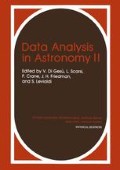Abstract
The idea of cellular automata or iterative arrays of processors is far from new and owes much to the pioneering work of John von Neumann1 in association with others, such as Stanislaw Ulam2 who saw, in the example of the human brain, an almost unbelievably powerful computing structure which owed its strength to a regular organisation of fundamentally simple computational units (neurons). However, it could be said, with the benefit of hindsight, that von Neumann’s contribution was impeded by a technologically premature realisation that large arrays of computing elements would be subject to serious failure unless some self-repair mechanism could be built into them. He devoted the last years of his life, until 1957, studying the complexity requirements necessary to enable array elements to reproduce themselves, this being an effective way of achieving self-repair. In fact, much can be usefully done with cellular arrays before the need to incorporate self-repair is an important factor and it is to be regretted that the brilliant von Neumann did not apply his mind to the more practical development of his subject.
Access this chapter
Tax calculation will be finalised at checkout
Purchases are for personal use only
Preview
Unable to display preview. Download preview PDF.
References
J. von Neumann, Theory of automata: construction, reproduction, homogeneity, Part II of “The Theory of Self-Reproducing Automata”, A. W. Burks, ed., University of Illinois Press, Urbana (1966).
A. W. Burks, ed., “Essays on Cellular Automata”, University of Illinois Press, Urbana (1968).
S. H. Unger, A computer oriented towards spatial problems, Proc. IRE 46: 1744 (1958).
S. H. Unger, Pattern detection and recognition, Proc. IRE 47: 1737 (1959).
J. Y. Lettvin, H. R. Maturana, W. S. McCulloch and W. H. Pitts, What the frog’s eye tells the frog’s brain, Proc. IRE 47: 1940 (1959).
M. B. Herscher and T. P. Kelley, Functional electronic model of the frog retina, IEEE Trans. MIL–7: 98 (1963).
B. H. McCormick, The Illinois pattern recognition computer — ILLIAC III, IEEETrans. EC-12:791 (1963).
S. Levialdi, CLOPAN: a closed-pattern analyser, Proc. IEE 115: 879 (1968).
M. J. B. Duff, B. M. Jones and L. J. Townsend, Parallel processing pattern recognition system UCPR1, Nucl. Instr. and Meth. 52: 284 (1967).
M. J. B. Duff and D. M. Watson, Automatic design of pattern recognition networks, in: “Proc. Electro-Optics’71 International Conference, Brighton, England”, Industrial and Scientific Conference Management Inc., Chicago, I11., p. 369 (1971).
M. J. E. Golay, Hexagonal parallel pattern transformations, IEEE Trans. C-18: 733 (1969).
K. Preston Jr., The CELLSCAN system—a leucocyte pattern analyzer, in: “Proc. Western Joint Computer Conf.”, p. 173 (1961).
M. J. B. Duff, CLIP4: a large scale integrated circuit array parallel processor, in: “Proc. 3rd Internat. Joint Conf. on Pattern Recognition”, Coronado, Ca., USA, p. 728 (1976).
S. L. Tanimoto, Programming techniques for hierarchical parallel image processors, in: “Multicomputers and Image Processing”, K. Preston, Jr. and L. Uhr, eds., Academic Press, New York, p. 421 (1982).
V. Cantoni, M. Ferretti, S. Levialdi and F. Maloberti, A pyramid project using integrated technology, in: “Integrated Technology for Parallel Image Processing”, S. Levialdi, ed., Academic Press, London, p. 121 (1985).
L. Uhr, Multiple-image and multimodal augmented pyramid computers, in: “Intermediate-Level Image Processing”, M. J. B. Duff ed., Academic Press, London, p. 129 (1986).
M. J. B. Duff, How not to benchmark image processors, in: “Evaluation of Multicomputers for Image Processing”, L. Uhr, K. Preston, Jr., S. Levialdi and M. J. B. Duff, eds., Academic Press, New York (to be published).
M. J. B. Duff, ed., “Intermediate-Level Image Processing”, Academic Press, London (1986).
J. T. Kuehn and H. J. Siegel, Multifunction processing with PASM, in: “Intermediate-Level Image Processing”, M. J. B. Duff, ed., Academic Press, London, p. 207 (1986).
Author information
Authors and Affiliations
Editor information
Editors and Affiliations
Rights and permissions
Copyright information
© 1986 Plenus Press, New York
About this chapter
Cite this chapter
Duff, M.J.B. (1986). Cellular Machines - Theory and Practice. In: Di Gesù, V., Scarsi, L., Crane, P., Friedman, J.H., Levialdi, S. (eds) Data Analysis in Astronomy II. Ettore Majorana International Science Series, vol 21. Springer, Boston, MA. https://doi.org/10.1007/978-1-4613-2249-8_20
Download citation
DOI: https://doi.org/10.1007/978-1-4613-2249-8_20
Publisher Name: Springer, Boston, MA
Print ISBN: 978-1-4612-9317-0
Online ISBN: 978-1-4613-2249-8
eBook Packages: Springer Book Archive

